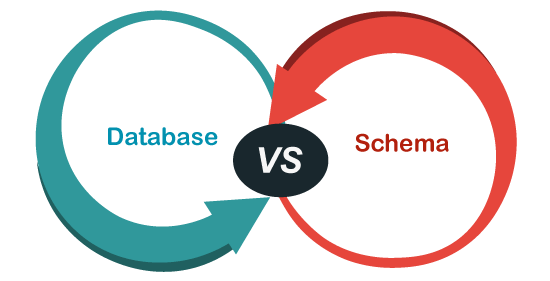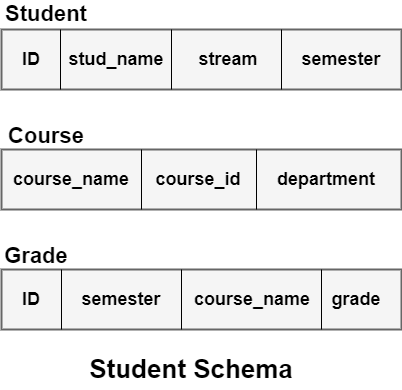-
MySQL Tutorial
- mysql-tutorial
- mysql-features
- mysql-versions
- mysql-data-types
- mysql-variables
- install-mysql
- mysql-connection
MySQL Workbench
User Management
MySQL Database
- mysql-create-database
- mysql-select-database
- mysql-show-databases
- mysql-drop-database
- mysql-copy-database
Table & Views
- mysql-create-table
- mysql-alter-table
- mysql-show-tables
- mysql-rename-table
- mysql-truncate-table
- mysql-describe-table
- mysql-drop-table
- mysql-temporary-table
- mysql-copy-table
- mysql-repair-table
- mysql-add/delete-column
- mysql-show-columns
- mysql-rename-column
- mysql-views
- mysql-table-locking
- mysql-account-lock
MySQL Queries
- mysql-select-record
- mysql-replace
- insert-on-duplicate-key-update
- mysql-insert-ignore
- insert-into-select
MySQL Indexes
- mysql-create-index
- mysql-drop-index
- mysql-show-indexes
- mysql-unique-index
- mysql-clustered-index
- mysql-clustered-vs-non-clustered-index
MySQL Clauses
MySQL Privileges
Control Flow Function
MySQL Conditions
- mysql-and
- mysql-or
- mysql-and-or
- mysql-boolean
- mysql-like
- mysql-in
- mysql-any
- mysql-exists
- mysql-not
- mysql-not-equal
- mysql-is-null
- mysql-is-not-null
- mysql-between
MySQL Join
- mysql-join
- mysql-inner-join
- mysql-left-join
- mysql-right-join
- mysql-cross-join
- mysql-self-join
- mysql-delete-join
- mysql-update-join
- mysql-equijoin
- mysql-natural-join
- left-join-vs-right-join
- mysql-union-vs-join
MySQL Key
MySQL Triggers
- mysql-trigger
- mysql-create-trigger
- mysql-show-trigger
- mysql-drop-trigger
- before-insert-trigger
- after-insert-trigger
- mysql-before-update-trigger
- mysql-after-update-trigger
- mysql-before-delete-trigger
- mysql-after-delete-trigger
Aggregate Functions
- mysql-aggregate-functions
- mysql-count()
- mysql-sum()
- mysql-avg()
- mysql-min()
- mysql-max()
- mysql-group_concat()
- mysql-first()
- mysql-last()
MySQL Misc
- mysql-comments
- export-import-database
- import-csv-file-in-database
- export-table-to-csv
- mysql-subquery
- mysql-derived-table
- mysql-uuid
- lead-and-lag-function
- mysql-cte
- mysql-on-delete-cascade
- mysql-upsert
- mysql-commands-cheat-sheet
- mysql-transaction
- mysql-partitioning
- mysql-row_number()
- mysql-cursor
- mysql-limit
- mysql-stored-function
- mysql-signal-resignal
- number-format-function
- mysql-ranking-functions
- mysql-window-functions
- mysql-union
- union-vs-union-all
- mysql-varchar
- mysql-enum
- mysql-set
- mysql-decimal
- mysql-cast
- mysql-convert()
- mysql-coalesce()
- mysql-wildcards
- mysql-alias
- mysql-functions
- mysql-rollup
- mysql-int
- mysql-today
- mysql-row-count
- prepared-statement
- mysql-literals(constants)
- mysql-date-time
- mysql-procedure
- mysql-minus
- mysql-intersect
- mysql-storage-engines
- mysql-explain
- mysql-sequence
- mysql-json
- mysql-standard-deviation
- how-to-select-nth-highest-record
- find-duplicate-records
- delete-duplicate-records
- mysql-select-random-records
- mysql-extract
- mysql-processlist
- mysql-bit
- change-column-type
- mysql-reset-auto-increment
- mysql-interval
- login-with-different-user
MySQL Globalisation
Regular Expressions
- regular-expressions
- mysql-rlike
- not-like-operator
- not-regexp-operator
- regexp-operator
- regexp_instr()-function
- regexp_like()-function
- regexp_replace()-function
- regexp_substr()-function
FULLTEXT Search
- mysql-fulltext-search
- natural-language-fulltext-search
- boolean-fulltext-search
- query-expansion-fulltext-search
- ngram-fulltext-parser
Differences
- mysql-vs-mongodb
- mysql-vs-ms-sql-server
- mysql-vs-oracle
- mariadb-vs-mysql
- postgresql-vs-mysql
- mysql-vs-sql
- table-vs-view
- delete-vs-truncate-command
- database-vs-schema
- primary-key-vs-foreign-key
- primary-key-vs-unique-key
- primary-key-vs-candidate-key
Interview Questions
Difference between Database and SchemaThe database is a common term in today's life. Many organizations, firms, enterprises, and institutes require a system to store their data in a well-formatted structure so that it might be easy to get valuable information whenever needs. Each database is made of physical files that contain data and metadata. Thus we can say that a database is a memory component to store information. Each database is a collection of schema means that while designing a database, we need to specify the schema for their structural view. The difference between DATABASE and SCHEMA terminology is the most common part of an interview question. The main difference between them is that the database is a collection of interrelated data, whereas schema is the database's structural view. This article explains the complete overview of DATABASE and SCHEMA and their differences that are primarily used interchangeably but are totally different.  What is a database?A database is an application that stores the collection of organized and interrelated data. Each database has its own structure, data types, and constraints of the data, their relation with another constraint, and the data or information about an object. The data stored in a database would update regularly. Hence it changes frequently. We can modify or change the data stored in the database using the DML (data manipulation language) command. The data in the database at a particular moment is called a database instance. A database can be generated and operated either manually or computerized. The size of the database based on the user's needs. In today's life, the database is generally used digitally. What is a schema?A schema is a logical representation of a database that describes the structural definition or description of an entire database. Generally, it is nothing more than a user who owns database objects such as tables, views, etc. We must specify schema during the design of a database. Once we define the database schema, we should not change it frequently because it would disturb the organization of data in a database. We can display a database schema in the form of a diagram referred to as a schema diagram. This diagram indicates what data contains in a table, what variables are, and how they are associated with each other. Note that the schema diagram doesn't show every aspect of the database, such as database instances, type of the attributes, etc. We can specify the schema using the DDL (Data Definition Language) statements. The DDL statement sets the table name, the attributes and their types, constraints, and its relation with other tables in a database. We can also use this statement when we want to modify the schema. For example, the below representation shows the schema of a database with student information. Here we can see all table's name and their variables.  Key Differences between Database and SchemaThe following points explain the main differences between database and schema:
Database vs. Schema Comparison ChartThe following comparison chart explains their main differences in a quick manner:
Database vs. Schema in MySQLMySQL does not provide any real distinction between a database and schema. They are used interchangeably, which means schema is synonymous with the database. As we write the query for creating the database, we can use a similar query for creating the schema. We can clarify this concept by creating a database and a schema using the steps are as follows: First, we can use the below syntax to create a database: We can use this syntax in a query as below output:  Second, we can use the below syntax to create a database: We can use this syntax in a query as below output:  Now, both the database and the schema have been created successfully. We can use the SHOW command to display the database and the schema. The query for the above illustration is given below: We will see the following output of the above query:  ConclusionIn this article, we have made a comparison between database and schema. Here we conclude that MySQL has no actual differences between a schema and the database. They are used interchangeably means both are synonymous. On the other hand, there is a clear distinction between them in some other languages. In simple terms, databases are collections of schema, and schemas are a collection of tables. Next TopicPrimary Key vs Foreign Key
|